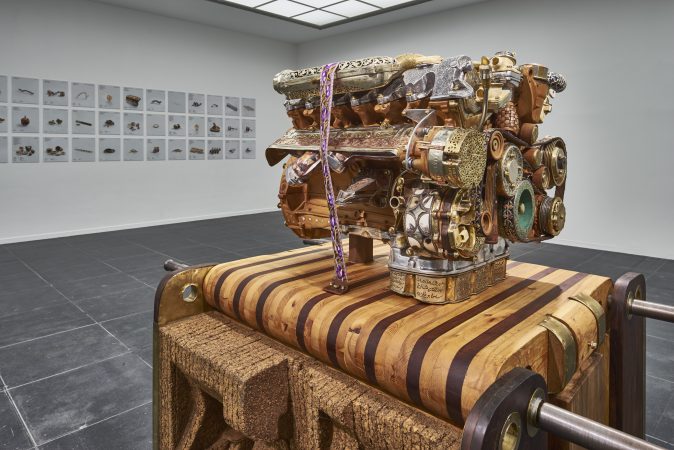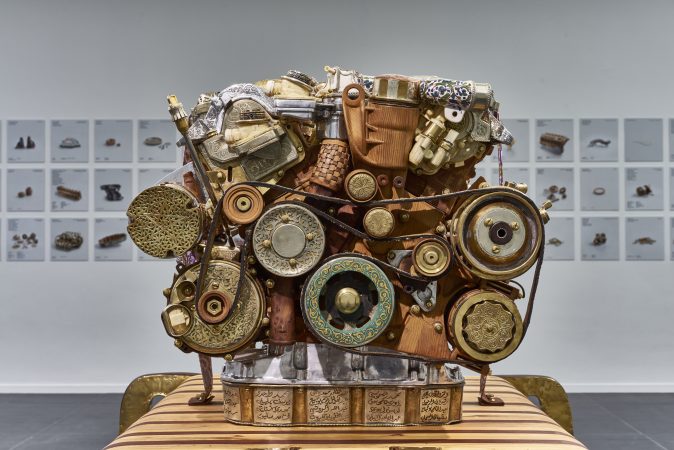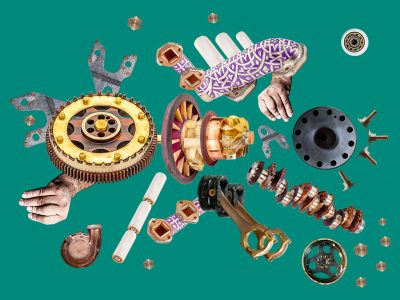Eric van Hove
V12 Laraki, 2013
Mixed Media, 53 materials including Middle Atlas white cedar wood, High Atlas red cedar wood, walnut wood, lemon wood, orange wood, Macassar ebony (dark Thuya wood), mahogany wood, Thuya wood, Moroccan beech wood, pink apricot wood, mother-of-pearl, yellow copper, nickel plated copper, red copper, forged iron, recycled aluminium, nickel silver, silver, tin, cow bone, goat bone, malachite from Midelt, agate, green onyx, tiger’s eye, Taroudant stone, sand stone, red marble from Agadir, black marble from Ouarzazate, white marble from Béni Mellal, pink granite from Tafraoute, goatskin, cowskin, lambskin, resin, cow horn, rams horn, Paleozoic ammonite fossils from Erfoud, Ourika clay, geometric terra cotta with vitreous enamel (Zellige), green enamel from Tamgrout, paint, cotton, argan oil, cork, henna, rumex
180 x 150 x 150 cm, 380 kg
Courtesy Hood Museum of Art, Dartmouth College, Hanover, New Hampshire (USA); purchased through the Mrs. Harvey P. Hood W’18 Fund and through a gift from Mr. and Mrs. Joseph H. Hazen
The V12 is a 12-cylinder engine by Mercedes-Benz, which is utilised in both military and non-military industry. Alongside its employment in top class vehicles, sports cars and tanks, it was also used as an aircraft engine for British and German jets during World War II.
The sculpture V12 Laraki refers to an incident in 2002 when Moroccan car designer Abdeslam Laraki developed the first prototype of a super sports car that was to be built entirely in Morocco. Back then, the engine could not be produced with the desired power in due time, so a V12 engine by Mercedes-Benz had to be procured. The finished Fulgura sports car was showcased in the Geneva International Motor Show of 2004.
Van Hove referenced this event in producing an exact replica of the Mercedes-Benz V12 engine within nine months. The manufactured industrial object was translated into a sculptural form that does not accentuate performance and functionality, but a manual and collaborative creation process. The artists chose to use regional materials that alienate the object from its original source.
The sculpture and all its components were made by more than 50 of the most experienced and qualified artisans in Morocco. The V12 engine’s 465 components were recreated from 53 ephemeral materials.



